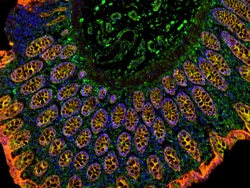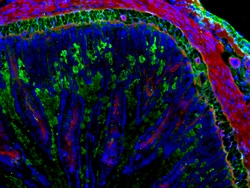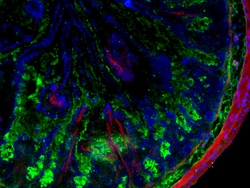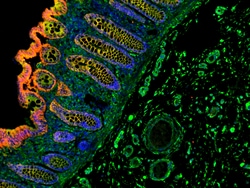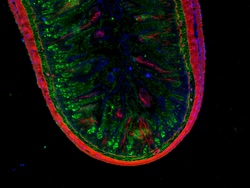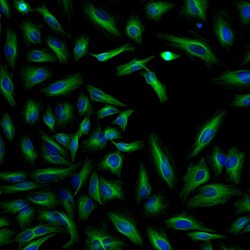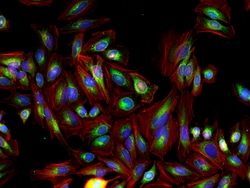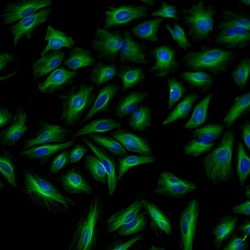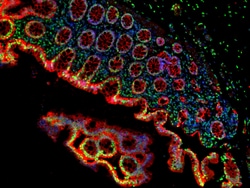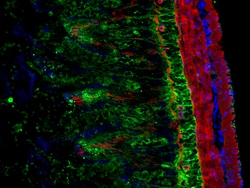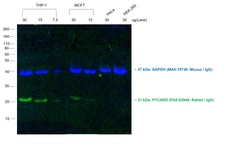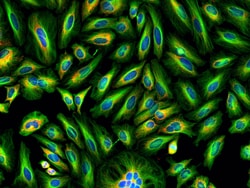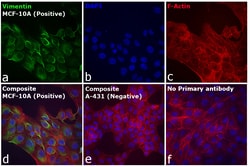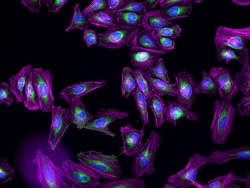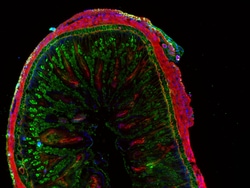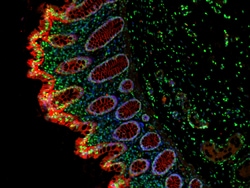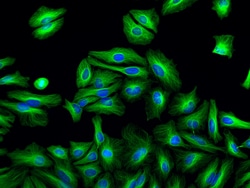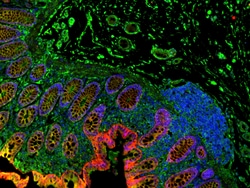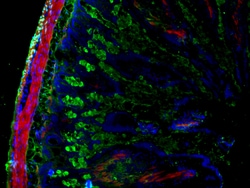Learn More
Invitrogen™ F(ab')2-Goat anti-Rabbit IgG (H+L) Cross-Adsorbed Secondary Antibody, Alexa Fluor™ Plus 488
F(ab')2-Goat Polyclonal Secondary Antibody
Supplier: Invitrogen™ A48282

Description
F(ab')2 antibody fragments offer several benefits over whole IgGs, due to their smaller size (~110 kD vs. ~ 150 kD) and the absence of most of the Fc region. The smaller size allows for better penetration into tissue sections, resulting in improved staining in applications such as IHC. The lack of Fc region results in reduced nonspecific background staining when staining cells with Fc receptors (such as immune cells) and other Fc interaction-related interference. F(ab')2 antibody fragments were obtained by a combination of pepsin digestion and immunoaffinity chromatography to remove residual Fc fragments and undigested whole IgG molecules. To minimize cross-reactivity, the goat anti-rabbit IgG F(ab')2 fragments have been cross-adsorbed against human, mouse and rat serum proteins. Cross-adsorption or pre-adsorption is a purification step to increase specificity of the antibody resulting in higher sensitivity and less background staining. The secondary antibody solution is passed through a column matrix containing immobilized serum proteins from potentially cross-reactive species. Only the nonspecific-binding secondary antibodies are captured in the column, and the highly specific secondaries flow through. The benefits of this extra step are apparent in multiplexing/multicolor-staining experiments (e.g., flow cytometry) where there is potential cross-reactivity with other primary antibodies or in tissue/cell fluorescent staining experiments where there may be the pr...
Anti-Rabbit secondary antibodies are affinity-purified antibodies with well-characterized specificity for rabbit immunoglobulins and are useful in the detection, sorting or purification of its specified target. Secondary antibodies offer increased versatility enabling users to use many detection systems (e.g. HRP, AP, fluorescence). They can also provide greater sensitivity through signal amplification as multiple secondary antibodies can bind to a single primary antibody. Most commonly, secondary antibodies are generated by immunizing the host animal with a pooled population of immunoglobulins from the target species and can be further purified and modified (i.e. immunoaffinity chromatography, antibody fragmentation, label conjugation, etc.) to generate highly specific reagents.
Specifications
| Rabbit IgG (H+L) Cross-Adsorbed | |
| Polyclonal | |
| Alexa Fluor Plus 488 | |
| Goat | |
| Affinity chromatography | |
| RUO | |
| Rabbit | |
| Secondary Antibody | |
| IgG |
| Immunohistochemistry (Paraffin), Western Blot, Immunocytochemistry, Immunohistochemistry (Frozen) | |
| 2 mg/mL | |
| proprietary buffer with 0.016% Bromonitrodioxane, 0.016% Methylisothiazolone; pH 6.5 | |
| Gamma Immunoglobins Heavy and Light chains. | |
| 500 μg | |
| Secondary | |
| 4°C, store in dark | |
| Liquid | |
| Responsibly packaged |
The Fisher Scientific Encompass Program offers items which are not part of our distribution portfolio. These products typically do not have pictures or detailed descriptions. However, we are committed to improving your shopping experience. Please use the form below to provide feedback related to the content on this product.

